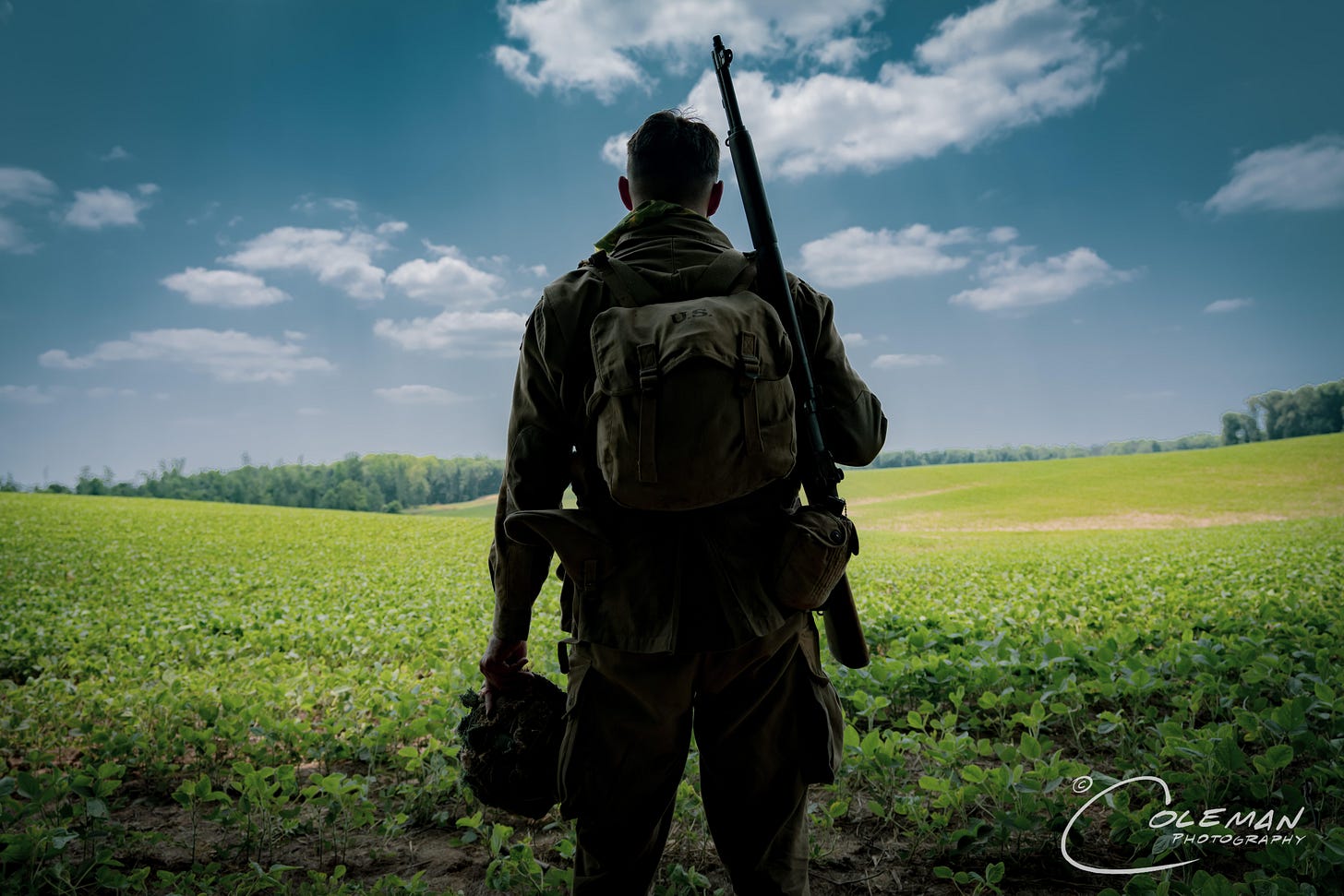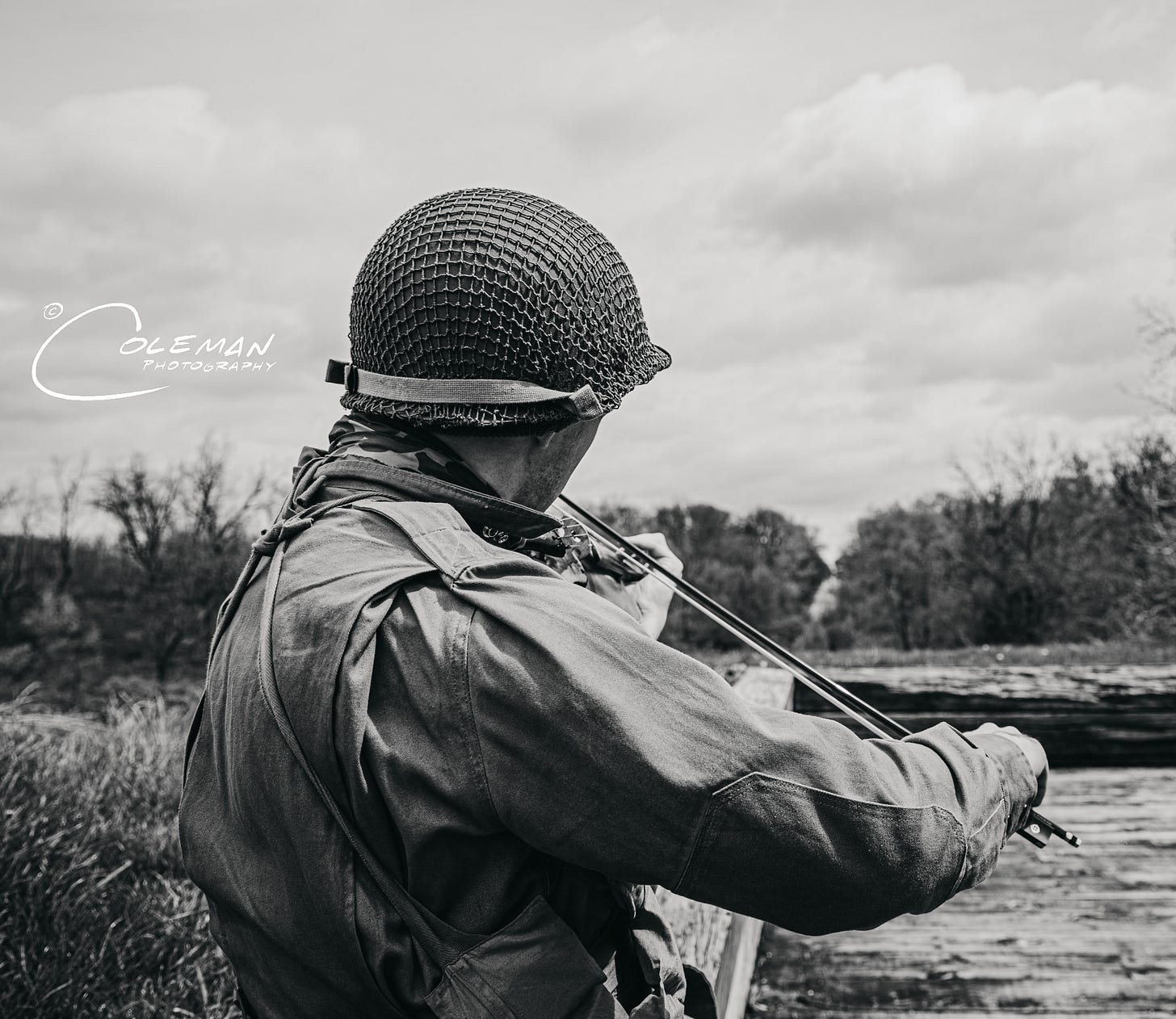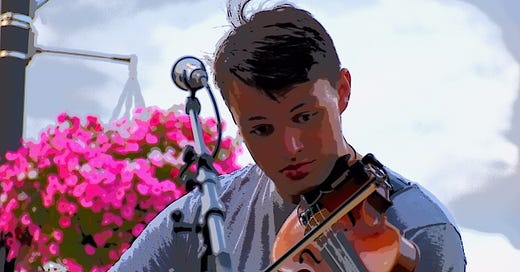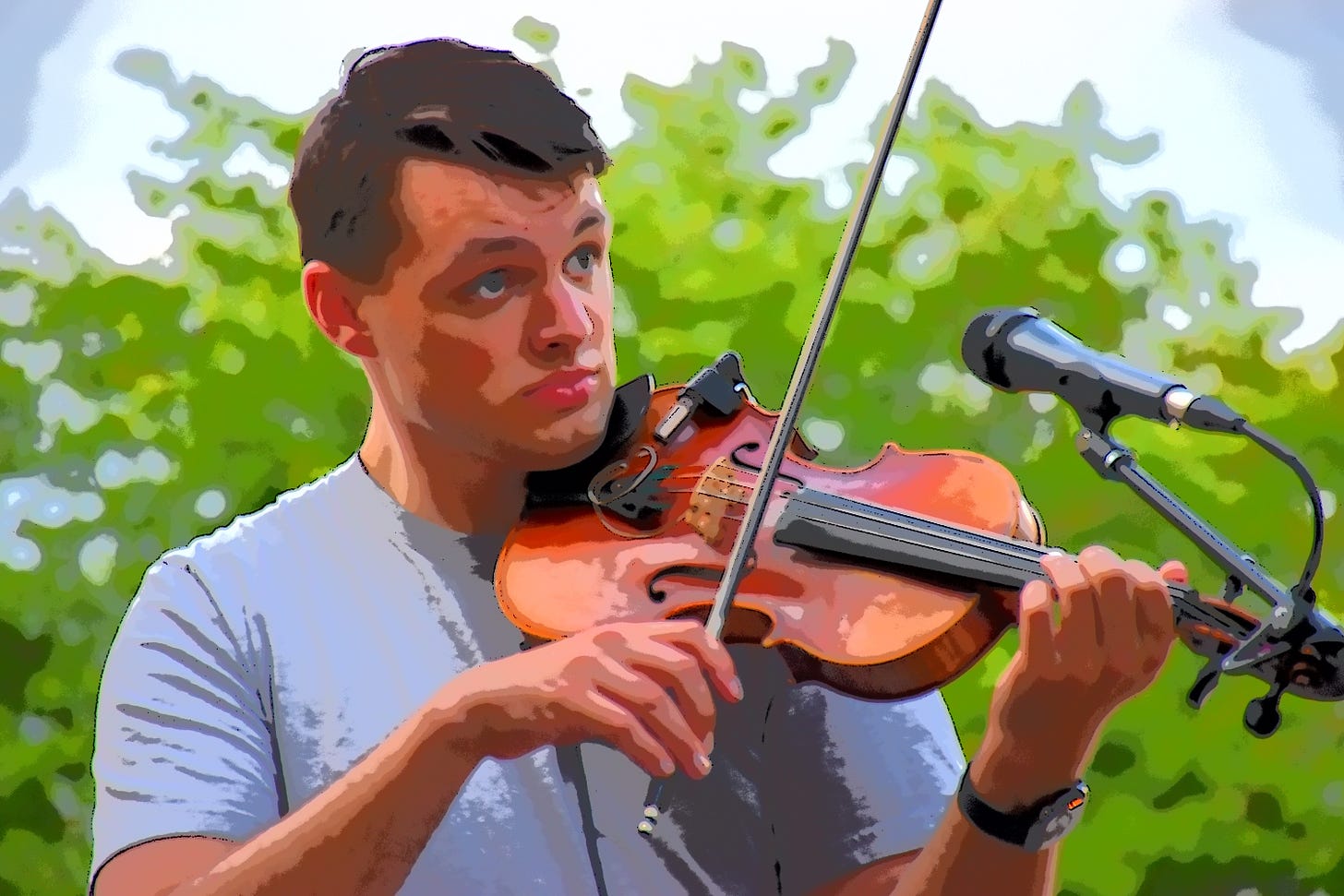Praise or Gratitude?
In a previous article on performance anxiety I ask the question, “What would you rather receive from your audience after a performance, praise or gratitude?”
Sometimes it seems that much of our institutional based music training is designed to shape our belief that as a musician our primary job is to provide a near perfect performance, usually as defined by a conductor, teacher, or professor, while communicating some level of emotion. If we are close enough to perfect, and portray something related to a feeling, then we have done our job. We are rewarded with pats on the back and hand shakes while receiving verbal reinforcement of a successful performance and job well-done, and in educational settings we also earn a grade. (That we are trying to meet a level of perfection as defined by others is itself problematic, and will be discussed in future articles on performance anxiety.)
Music perfection and emotion as performance goals, however, are somewhat self-serving, often with an expectation (or hope) for praise after one’s performance. In most training performance environments (as in institutions for example), audience members are often attending to fulfill a requirement (such as for a class), meet an obligation (such as to support a family member or friend), or make a social statement. If you take time to notice the audience, it is likely that many are distracted and interacting with their phones (and I don’t mean in the entrainment way where everyone is collectively engaged and waving their flashlights in unison). There is a lack of a sense of excitement or hope, and the mindset might be described as closed.
However, when I ask musicians if they would prefer to receive “praise” or “gratitude” after a concert, so far I have always received the answer “gratitude.” Do you believe that a near perfect performance with some added emotional elements is worthy of a response of gratitude? Praise represents the accomplishment of the performer. Gratitude represents something received by the audience. Performer accomplishment alone does not necessarily translate to audience reception, and we can do better than just hope or expect that an audience will connect with a perfect series of notes and rhythms.
Deep down we know this. Most of us have personal experiences of attending concerts where we clapped, maybe even hooted and hollered, patted someone on the back, shook their hand, and said good job because we were supposed to, not because we were moved. Most of us have experienced concerts where the clapping and shouts of support were part of the performance rather than an authentic reaction to a performance. Inauthentic audience responses are motivated by backstage workers beginning the clapping at recitals, overly exuberant friends and family vigorously applauding louder than everyone else, and when the bartender starts the applause to get the customers to acknowledge the musician(s). These inauthentic responses, where the action and reaction are based in tradition or manipulation rather than authentic responses contribute to a disconnect in the mind of the aspiring musician. Is it any wonder why musicians deal with performance anxiety?
There are also musical moments that are special and meaningful to us, worthy of gratitude, but they were perhaps far from perfect. Here are some considerations beyond notes, rhythms, and feeling to begin a practice towards creating awe experiences in music performance.
Creating Awe Experiences in Music Performance
Special moments in music performance can be designed and planned. Though we can’t guarantee an experience of awe for every audience member, we can creatively work to provide an atmosphere that invites people who are willing to share in the possibility of heightened experiences. However, if we are unfamiliar with, and not practiced in experiencing awe, we can not lead experiences of awe. In order to experience awe, both in life and on stage, we must be willing to step outside our comfort zone and take a chance on experiencing life in a new way.

Consider Ezekiel Kinney whom I heard play with The Fan Club band a couple of years ago. I was disappointed when he stopped appearing with the band, and then I was informed that he had joined the Navy. Now a couple years later he has returned. Ezekiel shares, “The navy was rough on being a violinist, the navy has bands but they’re mostly all winds and brass. But I’m very proud to serve and happy to have that and my music life intertwined.” I watch Ezekiel now and see a more confident, open, and daring musician on stage. This didn’t come from extensive violin technique building while he was in the Navy, but rather from living a meaningful and purposeful life with experiences that expand our perspective. You don’t have to join the Navy to experience this growth, but you do need to take a few steps outside of your comfort zone. Step outside of buildings, move away from media, and begin your own path towards connecting with something greater than yourself.

In a new book Awe: The New Science of Everyday Wonder and How It Can Transform Your Life (2023), Dan Keltner shares research-based sources of awe, and defines awe as “being in the presence of something vast and mysterious that transcends your current understanding of the world”. Rare talents were reported as one source of awe, and this includes virtuosity in music. However, the number one reported source of awe in the study which includes 26 countries, multiple religions, and varying cultures was moral beauty, in particular when one observed another in acts of kindness, courage, strength, exceptional virtue, and purity to name just a few examples. Ability is an example listed as contributing to an experience of awe, but in the context of helping others or goodness of intention. So I ask again, would you prefer to receive praise or gratitude for your performance? If your answer is still gratitude, then how does your demonstration of ability, or even virtuosity, on stage help others? This is where performance design begins.
First You Must Open Yourself to Experiencing Awe
Designing performances for awe begins with first opening yourself to experiencing awe prior to sharing awe with an audience. For ideas on beginning your own practice of seeking awe read Awe - Cultivating Positive Emotions for Optimal Performances. For examples of music performance designed for moments of awe, view the videos in Introduction to Music Performance Design: What You Too Can Learn from U2.
Getting Started: Three Levels of Designing Awe in Musical Performance
Keep in mind that nothing is achieved without practice, otherwise it wouldn’t be achievement. Experiencing awe takes regular practice. Sharing awe takes regular practice. Designing experiences for awe takes regular practice, as does delivering experiences for awe. However, practice does not have to happen in a practice room or on a stage. Practice should happen as a part of everyday life, and bringing awe found in everyday life to the stage is part of sharing the human experience in musical performance.
Three levels of awareness are presented here, with each level having lessons to precede the next level. Start small, practice everywhere and in different contexts, and seek out connectedness in everyday life as part of preparing for creating such experiences on stage.
1. Open Space, Open Body
This is perhaps the easiest, and simultaneously the hardest of actions to take. Opening the space between you and your audience, or removing the invisible wall between you and your audience, is physically simple. However, before you have practiced being open, the idea of walking into a collective space between you and the audience and looking them in the eye can be terrifying. In some settings it is not uncommon for the artist to be midway or back on the stage, a music stand raised between the musician and the audience, and very few if any words shared. Consider taking the following steps toward opening the space and removing the invisible wall between you and your audience.
Open Space, Open Body Activities
Take a step (or two, or a few) closer to your audience.
Lower, move to the side, or remove any music stands, tables, microphones, or other equipment out of the visual line between performers and your audience, eventually leaving only essentials such as an instrument and microphone.
Make regular eye contact with your audience and share your facial expressions.
Communicate verbally with your audience.
Consider the golden ratio (or golden mean) in designing time and space in performance. Two quick examples of time include placing a high point or attention grabber (such as use of silence or bass drop) approximately 2/3 through a piece. Similarly, intermissions and breaks should be around 2/3 into a performance with second half of the performance slightly shorter than the first half. The golden ratio in design and visual art can be applied to the visual elements of your performance. For an introduction to golden ratio in music performance, check out Stephen Langston’s article.
Be considerate of your audience’s time and always leave them wanting more.
As you read the list above, did your anxiety increase as you read each one? Did you start making excuses around #2, possibly related to needing your music, stand, and equipment to be near you? This type of excuse making is related to a closed mindset, and a closed mindset keeps you from growing. When experiencing a closed mindset, a gratitude practice can help you open to new possibilities. If you are stuck here, review this article: Gratitude - Cultivating Positive Emotions for Optimal Performances.

Open Space, Open Body Example
There is a quaint venue near me that is a combined coffee house, wine bar, and book store. There is a lifted stage area by the front window with a grand piano and a small sound system. Live music is featured here multiple times a week. I recently heard a student jazz trio perform on this stage, and when I walked in I noticed an uneasiness. The three musicians (saxophone, bass, and drums) were as far back on the stage as possible leaving a majority of the stage floor empty between the musicians and the audience sitting at small tables in front of the stage. The bass player and drummer rarely looked at each other, instead looking downward or away, and the saxophone player looked and played as though he was practicing jazz patterns alone in a practice room. The musicians looked uncomfortable. The audience began showing discomfort in their facial expressions and nervous movements such as shifting in their seats and looking away from the stage.
There was an imaginary wall between each of the performers, and also between the performers and the audience. Another wall existed between the people sitting at different tables. These walls may have been invisible, but they could be felt as strong as if they were made of concrete. The musicians were probably just very nervous, but the effect was appearing disinterested in the audience that they were playing for. Sometimes the actions we take because we are nervous create an environment that breeds more nervousness.
Now imagine the three musicians spending five minutes sitting or standing near the front of the stage and conversing with audience members, finding something in common, sharing a story or experience. Then, performing from that same space forward on stage, making eye contact with each other and audience members throughout the performance. Every so often one of the musicians catches the eye of someone in the audience and gives them a smile, or even a little eye twinkle acknowledging the new shared relationship. Perhaps the musicians are still nervous, but we are now in a shared space without walls, and all part of a new collective conversation. By inviting the audience to join you in the performance space you are bringing down that wall of separation and opening yourself to possibility. If you are already nervous, opening yourself up to an audience will probably not make you more nervous, and instead it may even reduce your anxiety. Lowering that wall will almost surely contribute positively to the experience, but like everything worth achieving, this too takes practice.
2. Open Minds
Closed mindedness resists awe, and in heightened arousal experiences such as awe, a closed mind is more likely to lead to sadness rather than joy. Both opening your own mind and experiencing awe are important prior to designing and performing for such experiences on stage. Review these articles for gratitude and awe exercises. Similar activities through story, photographs, or video can open the minds of your audience to experiencing awe. In addition to what you do on stage, one can utilize a printed or online program, visual props outside or inside the venue, and audio as part of your overall performance design.
Lessening the barriers that you put between yourself and your audience as described in Open Space, Open Body can lead to feeling vulnerable, but vulnerability is part of the awe experience for both performer and audience. Once you have practiced being vulnerable with Open Space, Open Body, begin experimenting with an Open Mind.
Open Mind Activities
Choose music for your own personal purpose and meaning, or collective purpose and meaning from an ensemble, that can be shared with your audience.
Play by memory. Lowering a stand or microphone to reveal your facial expressions allows for developing a relationship with your audience, and serves as invitation to collectively experience the event. Removing the stand and playing by memory opens your mind for a heightened level of building this relationship. If you have not played from memory before, you may be currently making a case in your mind as to why memorization is not necessary or important. This is a closed mindset, and I again direct you here: Gratitude - Cultivating Positive Emotions for Optimal Performances. Playing from memory is a hurdle some never attempt, and some will continuously make a case for using written music and a stand. However, you can not make a case against the experience of playing from memory as being different, more intimate, more personal, and more open for connecting with your audience. Begin this, and all practices, with small steps. Choose one short piece on a recital or show to try by memory, perhaps an encore or short piece before an intermission/break. Practice playing this piece by memory to friends and family before on stage. Video yourself playing a piece by memory. These are small mastery experiences that will build your confidence for the practice of playing by memory.
Have a conversation with your audience. Beyond sharing with your audience information about you and the music that you are performing, engage the audience by asking questions to initiate thought, reflection, and engagement. Look to sources of awe, as well as your own awe experiences, for opportunities to design these conversations.
Plan for moments of musical entrainment. Entrainment in music is when there is a collective engagement and synchronization of musicians and listeners to rhythm. Programming and performing music that gives opportunity for an audience to connect through simultaneously feeling and/or moving to the same rhythm can be a powerful contributor to creating awe in musical performance.
Open Mind Example
Opening your mind involves allowing yourself to be vulnerable enough to give up some perceived control over every aspect of a performance. In giving up some control, you are inviting your audience to join you in an experience that breathes, and one that develops through shared emotions and understandings. A heightened performance experience in this context comes from the real time interactions between audience and performer(s). The band U2 provides two of many possible examples of giving up control by inviting the audience to lead the singing in the beginning of a concert, and nearer the end of the concert invites individual audience members to lead singing and movement from the stage. You can view these concepts here: Introduction to Music Performance Design: What You Too Can Learn from U2.
3. Open Hearts
“Cultivating a Good Heart” is a common concept across many fields including spirituality, mental health, well-being, and positive psychology. The practice of cultivating a good heart can reduce performance anxiety and open us to the opportunity for deeper experiences such as experiencing awe. Practices of gratitude and actions taken for the benefit of others can contribute to cultivating a good heart. Gratitude and good deeds can be introduced in music performance through sharing your appreciations verbally, through various types of media, and through what you choose to perform. Before bringing a practice of gratitude to the stage, first build your own gratitude practice to be able to share your good heart with others.
Open Hearts Activities
Choose a program that allows for collective meaning and purpose among musicians and listeners to be experienced as part of the performance.
Beyond playing by memory, allow yourself to be vulnerable and open to your performance being influenced by the relationship that you are creating with your audience throughout a performance.
Ask questions that engage your audience in collective discovery, possibly learning something new about themselves or each other, or experiencing something familiar in a new way.
Allow some musical elements to evolve during the performance, collectively creating something new with your audience.
Open Hearts Examples
Communicate directly with an audience through writing. A band director had students write their parents a letter of gratitude that they were to open at a specific time during the concert. Messages to help cultivate experiences of awe can also be included in programs.
Share verbally messages of meaning and purpose from the musicians. I had honor band students write what they were hopeful for in relation to a song that we were rehearsing about hope, and then read some of their hopes aloud prior to performing the piece. The band U2 often relates to current social issues to create a sense of unity among audience members and the band.
Find ways for the audience to share what they think, believe, and feel. Use words or other creative content you allow them to share immediately in the performance (similar to how a comedian works), possibly through projection on screen or creating referential musical content.
Add video or audio from something collectively meaningful to your audience. A local symphony had drone video created of the land referred to in a musical composition written about the area, and showed the video during the performance. The video was from above, a new perspective on a familiar area to many of the audience members. The band U2 uses video of commonly shared experiences to promote openness and awe among audience members.
Include the audience in the performance on a level of collective achievement. This can be as individuals or as an entire audience such as demonstrated by Jacob Collier in concerts (see Collier’s Somebody to Love video here.)
In Conclusion
This article is introducing many concepts for just beginning to consider possibilities in music performance design for positive emotion and awe. These concepts will be developed and presented in future articles with prompts for creating your own unique performances. Start wherever you are comfortable. Remember to start with trying one new thing at a time, and give yourself the opportunity to practice and explore new possibilities. Music performance should be authentic, and designed by you. What works for someone else may feel awkward coming from you. Look inward and design your performances based on your personal (or collective ensemble) meaning and purpose.
Bill’s Thoughts…
Discovering awe…Several years ago, I entered a solo competition for the first time. For the few weeks leading up to the competition, Erin and I were living on our small sailboat in a marina on Lake Michigan. There’s not much space to practice on a 25 ft. sailboat! I needed to practice somewhere, but I was self-conscious everywhere, you know the feeling, like when you think everyone within five miles is either wanting you to stop playing or judging every note you play.
Erin sent me out to the park overlooking Lake Michigan near our boat to face my fears head on. I was on a bench where there were people walking, boating, and relaxing everywhere around me. This was the last place I wanted to practice, and I longed for the 4x4 cubicle practice room where at least I had the impression that I was alone. Erin said the purpose of sending me to the very place where I was most uncomfortable was to get me out of my closed mindset…and she was right!
At first, I was very self-conscious playing in front of the strangers in the park. Day after day I went out to practice. Each day I saw more of Lake Michigan and its beauty, ferociousness, peace, and all of its grandeur. As I began to experience awe from the expansiveness of my surroundings, my mind and heart opened to the nature and people around me. And a strange thing happened…people came up to me wanting to talk about trombone, their own personal and family musical experiences, or just chat. Some people walked by and just said, “Cool!”. This feeling of awe from my surroundings and connection to the people around me began to lessen my self-consciousness, and I began playing more freely than ever before.
Then, at the competition when I entered my assigned practice room, I felt uncomfortable, restricted, and even lonely. Mentally I took myself back to the park bench and began my warm-up. As I performed in the competition, it was the least nervous I had felt performing up to that point in my life, and as a result of being more open, I tied for second place at this national solo competition, the first solo competition I ever entered! The take away from this is what I really won…the ability to embrace the experience of awe I found out on Lake Michigan and the connection I felt with those out in the park to be free and open to perform in an authentic and genuine way.
Please share a moment of awe that you have experienced, and what contributed to your heightened arousal. How can you use this information to create awe moments in your own music performances?













So I re-read this article just yesterday afternoon (it’s one of my favorites). Then, last night I went to a live music jam not too far from my home. The “house band” has credits that read like a who’s who of Rock music in the 70s and 80s, and they were quite stellar in person as a trio. They were truly having fun, very interactive with each other visually and with the audience as well. They did a free-form version of Elton John’s “Rocket Man” that was really stellar, taking a well loved standard and making it their own. These guys have played the big arena concerts but this night, they were playing for the 20 or so people who came out to listen and then step in and play some themselves.
This was for me, a great example of awe in musical and visual performance.